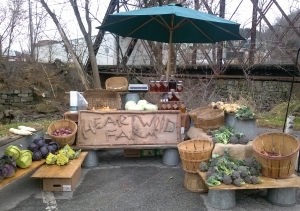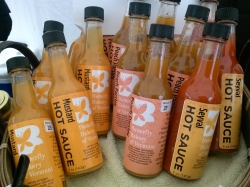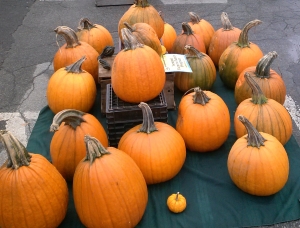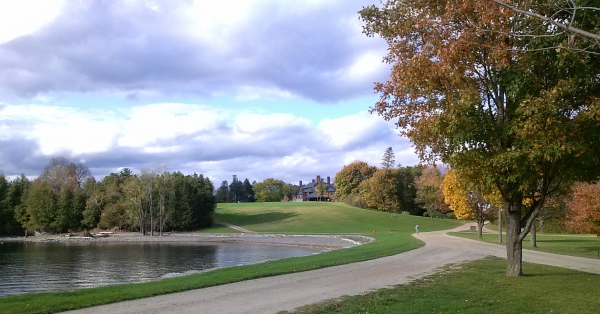The sweets-fueled Halloween rush is over – which leaves some folks vowing never to touch another piece of candy, and other vowing to get back to high quality sugar indulgences. We’re voting for the second strategy, because Vermont has some exquisite confections to enjoy responsibly. Here we offer a few ideas excerpted from blog posts submitted by students in the University of Vermont Farm-to-Table Foods System class:
 Lake Champlain Chocolates By Tara Fisher: Who wouldn’t want to be a Taste Tester for Lake Champlain Chocolates? The pin stating that you are a Taste Tester can be earned by taking a tour of the Lake Champlain Chocolates factory. You will learn where the ingredients that are used to make the chocolates come from. A cocoa bean is passed around for people to see firsthand the actual product that makes up the main ingredient in chocolate. The stages of how the cocoa bean is processed to be used in the chocolates are also explained and . . .. Many of the ways that the cocoa bean is processed have not changed for many years. The tour guide will also explain the three basic types of chocolates that can be used to make the Lake Champlain Chocolates. As it is explained to you, you are given a sample of each one so you can taste the differences that give the Champlain chocolates their amazing tastes. . . .During the tour you get to watch the workers in the factory make the Lake Champlain chocolates! The hand detailing they do on all of the novelty pieces that they create can be seen along with the making of the more common chocolates. . .The day that I visited and took a tour the snowmen were the novelty pieces that were being produced. I found it fascinating to watch the intricate details, like the faces, being added to each of the snowmen!
Lake Champlain Chocolates By Tara Fisher: Who wouldn’t want to be a Taste Tester for Lake Champlain Chocolates? The pin stating that you are a Taste Tester can be earned by taking a tour of the Lake Champlain Chocolates factory. You will learn where the ingredients that are used to make the chocolates come from. A cocoa bean is passed around for people to see firsthand the actual product that makes up the main ingredient in chocolate. The stages of how the cocoa bean is processed to be used in the chocolates are also explained and . . .. Many of the ways that the cocoa bean is processed have not changed for many years. The tour guide will also explain the three basic types of chocolates that can be used to make the Lake Champlain Chocolates. As it is explained to you, you are given a sample of each one so you can taste the differences that give the Champlain chocolates their amazing tastes. . . .During the tour you get to watch the workers in the factory make the Lake Champlain chocolates! The hand detailing they do on all of the novelty pieces that they create can be seen along with the making of the more common chocolates. . .The day that I visited and took a tour the snowmen were the novelty pieces that were being produced. I found it fascinating to watch the intricate details, like the faces, being added to each of the snowmen!
Lake Champlain Chocolates By Margaret Liljedahl Every year, Lake Champlain Chocolates produces a million pounds of chocolate. In 1983, the company grew out of the kitchen of the Ice House restaurant in Burlington and now sells chocolates in every U.S. state. . . Upon arriving at the factory, visitors are greeted by chocolate brown walls and plaques depicting the various stages of chocolate production. Every hour from 11am to 2pm on weekdays, tours are given from an observation room overlooking the factory floor. The presentation lasts roughly 40 minutes and guests are able to sit and listen to a tour guide, watch a video, and indulge in abundant samples. The tour focuses on all stages of chocolate production and includes explanations of how all types of chocolate are made. Visitors can watch as confections are produced by the thousands to satisfy chocolate cravings nationwide. Lake Champlain Chocolates prides itself on being a pioneer in terms of sourcing local ingredients such as dairy, syrup, and the company has even begun to cultivate its own honey at the Intervale Center in Burlington. Futhermore, Lake Champlain Chocolates uses only natural ingredients; most of their products only contain around 5 ingredients! After the tour, the factory store is a wonderful way to continue the indulgent experience by buying chocolates for later. There is even a “factory seconds” area in which guests can purchase slightly imperfect, yet entirely delicious, chocolates at a discount .. . .
Maple Butter Recipe By Angela Russo With local butter and local maple syrup, there is nothing quite like Vermont maple butter. It is sweet, creamy, and delicious. It can be made in less than five minutes start to finish, and depending upon who hangs around your house, it may be gone in even less time than that! With butter this tasty, you should stop by Mirabelles, located on Main Street in Burlington, to pick up a muffin or croissant to soak up your homemade butter. Mirabelles has been voted the “Best Bakery in Chittenden County” and emphasizes its use of local ingredients to make all of its products from scratch.
 Maple Butter
Maple Butter
(Yields ¾ Cup)
Ingredients:
½ cup softened butter
¼ cup maple syrup
Preparation:
Mix butter and maple syrup with electric mixer until blended. Serve on toast, crackers or warm muffins
Cookies from a City Market Cooking Class By Sam Ahern In the heart of Burlington, Vermont, City Market Onion River Co-op is far from your average local market. City Market is a community-owned and run food cooperative that provides for the needs of all members of the Burlington community. For those who want a classic PB & J on sliced white bread or those who would rather a loaf of fresh baked sourdough, City Market has adapted to what each member of the community wants. City Market prides itself on its dedication to supporting the local Vermont food system and Vermont’s economy. Working with thousands of local Vermont farmers, City Market has created life long relationships with these vendors and provides the community with a wide selection of locally grown products. Not only does City Market provide a spectrum of local products. Uniquely, the Co-op also provides a range of classes and workshops available to both members and non-members. From classes on how to start a school garden or your own compost to cooking classes on vegetarian and vegan diets, City Market offers a multitude of classes to take for learning experience or just for fun! I attended ‘Intro to Paleo Foods’ and had a wonderful and educational experience working with all locally grown and organic products and I was introduced to the intriguing diet of the earliest humans by Allison Johnson . . .
Allison Johnson’s Coconut Chocolate Chip Macaroons (24-32 cookies)
1 cup coconut butter/Mana
2/3 cup grade b maple syrup
1 tsp. sea salt
2 cups of unsweetened shredded coconut
½ cup chocolate chips (Chocolate Dream or Enjoy Life)
Instructions:
• Begin by warming coconut butter/Mana in either a hot water bath or in the microwave (WARNING: If using the microwave, watch carefully and only heat for 10 seconds at a time, removing to stir and check the butter each time)
• Once the coconut butter/Mana has fully melted, put in a medium mixing bowl and mix together with syrup and salt until well combined
• Fold in the shredded coconut and chocolate chips
• Use a rounded tablespoon to form 1-inch balls and press flat onto a baking sheet
• Bake at 300 degrees for 25 minutes, until edges brown slightly; allow to cool before removing from tray
• Serve and enjoy!
Helen Labun Jordan writes about food and the business for food for local and regional publications, and online at www.discoveringflavor.com
Source: Dig in VT Trails

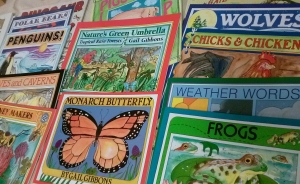
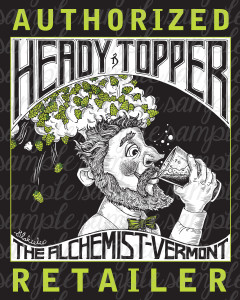
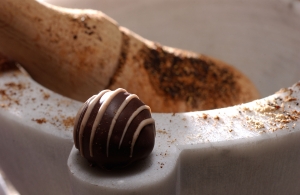

 Maple Butter
Maple Butter